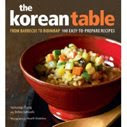It's really summer now - too hot to eat, too hot to cook.
You need something easy to make and digest.
It should be appetizing, cooling, and nutritious.
In many Asian countries, noodles are considered a snack food
or a light meal. In summer, they are served cold, often with a tangy
dressing.
In Japan, noodles are a noisy food. Enter a noodle a shop, and you
hear no one talking. Instead, you are greeted by the loud
rhythmic slurping of noodles being sucked down. Silence while
eating noodles in Japan is definitely not cool. The louder the better.
It signals kudos to the chef.
Asian noodle restaurants are often devoted to a
particular type of noodle, like Ramen (Chinese noodle
soup) or Soba (buckwheat noodles). Soup stocks and
noodle dough recipes are closely guarded secrets. If you
want to see a very funny movie about eating noodles
Japanese style, rent ''Tampopo'' (Dandelion), directed by
Juzo Itami. Your next bowl of noodles will never be the
same.
To Americans, pasta means a white, flour-based noodle,
but there are myriad noodles to choose from that can
make a meal interesting. You don't have to go to an
Asian restaurant to enjoy the more exotic noodle dishes,
either; the noodles are available at Asian grocers and
even local supermarkets. Top them with cold, left-over
meat or poultry, shrimp, eggs, or vegetables with a light
dressing and you have a one-dish, nutritionally balanced
meal.
Chinese egg noodles can be eaten cold or hot. Fresh
noodles come in 1- or 2-pound nests, and are found in
the refrigerator section in Asian groceries. Buy more
than you need and freeze some for future use. Cook
briefly, drain, and cool with cold water to make a cold
noodle dish. Drizzle on some sesame oil to keep the
noodles from clumping as they wait to be dressed.
These noodles can also be found in dried form; they look
like compressed rectangles. They will need to be
reconstituted with water. Follow the directions on the
package (presumably in English).
A large variety of cellophane noodles are imported from
many Asian and South Asian countries. All are dried and
must be soaked in hot water, and, in some cases,
cooked briefly in boiling water until they become
transparent. Once softened and drained, they are ready
for use in any number of dishes. Cellophane noodles are
made from a variety of starches like rice flour, alimentary
paste, and yam root. (Technically, some are not called
noodles, but filaments.) Never mind what they are made
of, they provide a great background for toppings, and
absorb a tangy dressing to produce a truly refreshing
experience.
The grand champion of noodles, though, is soba. Made
from a combination of wheat and buckwheat flour, soba
is light brown, has a subtle, sweet, and nutty flavor, and
is very nutritious. High in fiber, protein, and vitamins B
and P, soba is also known to help lower cholesterol and
blood pressure and helps the liver process alcohol. This
last fact is one reason that soba is such a popular
late-night snack in Japan after an evening of drinking with
friends.
It is amazing that soba isn't more popular in the United
States yet. Fresh soba noodles are a rare treat here, but
are found dried in all Asian markets, Trader Joe's, and
Bread and Circus. Traditionally, they are packaged with
multiple single-serving bundles. The noodles are
wrapped with a paper band that is removed before
cooking. The dried noodles are dropped into boiling
water and cooked for 5-7 minutes. Drain, then rinse if
serving cold. A chewy texture (al dente) is best.
Kyoko Wada and her daughter, Akiko, moved to
Massachusetts from Japan several years ago.
''Japan is so hot in the summer, you usually don't feel like
eating,'' says Kyoko.
''I don't have an appetite,'' echoes Akiko, ''but I like to
eat cold noodles in the summer. They look really good
and feel so cool when they go down your throat.''
Kyoko serves the noodles on glass plates or in glass
bowls with ice cubes.
''The appearance is very important and I choose cool
color plates like blue and green to serve food on,'' she
says. She reminds us of the Japanese saying that we
eat with our eyes.
The accompanying recipes use three kinds of noodles.
Served on a large platter, the noodles will look
spectacular on a picnic buffet table. For a family meal,
make individual servings. Experiment on a few sultry
summer days; slurping is not required. Still, what a great
excuse to make noise!
Jaffa/Yafo at Dusk
13 years ago



